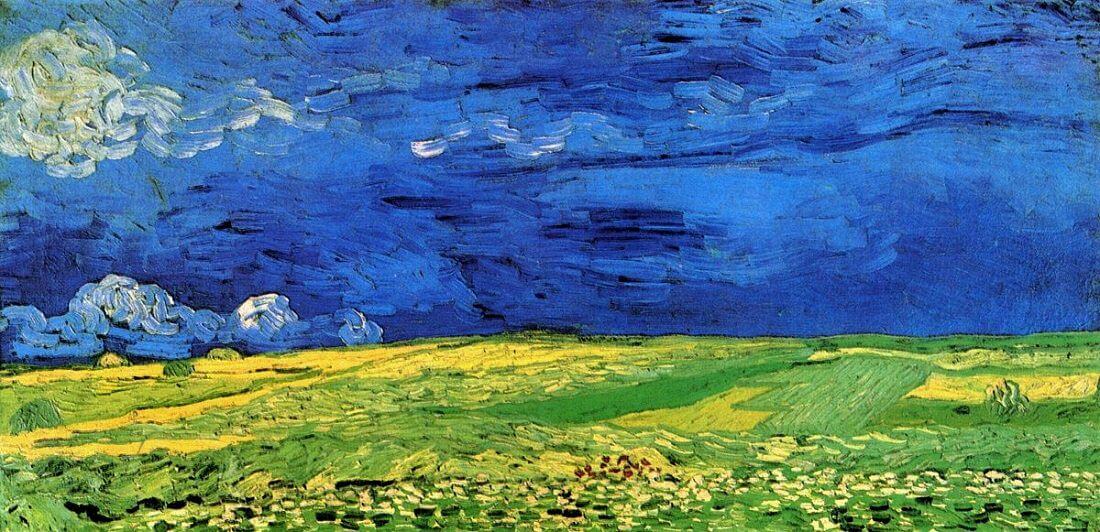Wheatfield Under Thunderclouds, 1890 by Vincent van Gogh

wIn May 1890, Van Gogh traveled from Saint-Remy to Paris, where he had a three-day stay with his brother, Theo, Theo's wife Johanna and their new baby Vincent. Van Gogh found that unlike his past experiences in Paris, he was no longer used to the commotion of the city and was too agitated to paint. His brother, Theo and artist Camille Pissarro developed a plan for Van Gogh to go to Auvers-sur-Oise with a letter of introduction for Dr. Paul Gachet, a homeopathic physician and art patron who lived in Auvers. Van Gogh had a room at the inn Auberge Ravoux in Auvers and was under the care and supervision of Dr. Gachet with whom he grew to have a close relationship, "something like another brother."
Van Gogh arrived in Auvers in late spring as pea plants and wheat fields on gently sloping hills ripened for harvest. The area bustled as migrant workers from France and Brussels descended on the area for the harvest. Partial to rural life, Van Gogh strongly portrayed the beauty of the Auvers country side. He wrote his brother, "I have one study of old thatched roofs with a field of peas in flower in the foreground and some wheat, the background of hills, a study which I think you will like."
Van Gogh painted thirteen large canvases of horizontal landscapes of the wheat harvest that occurs in the region from the middle to late July. The series began with Wheatfield Under Thunderclouds then Wheatfield with Crows was painted when the crop was on the verge of harvest.




















